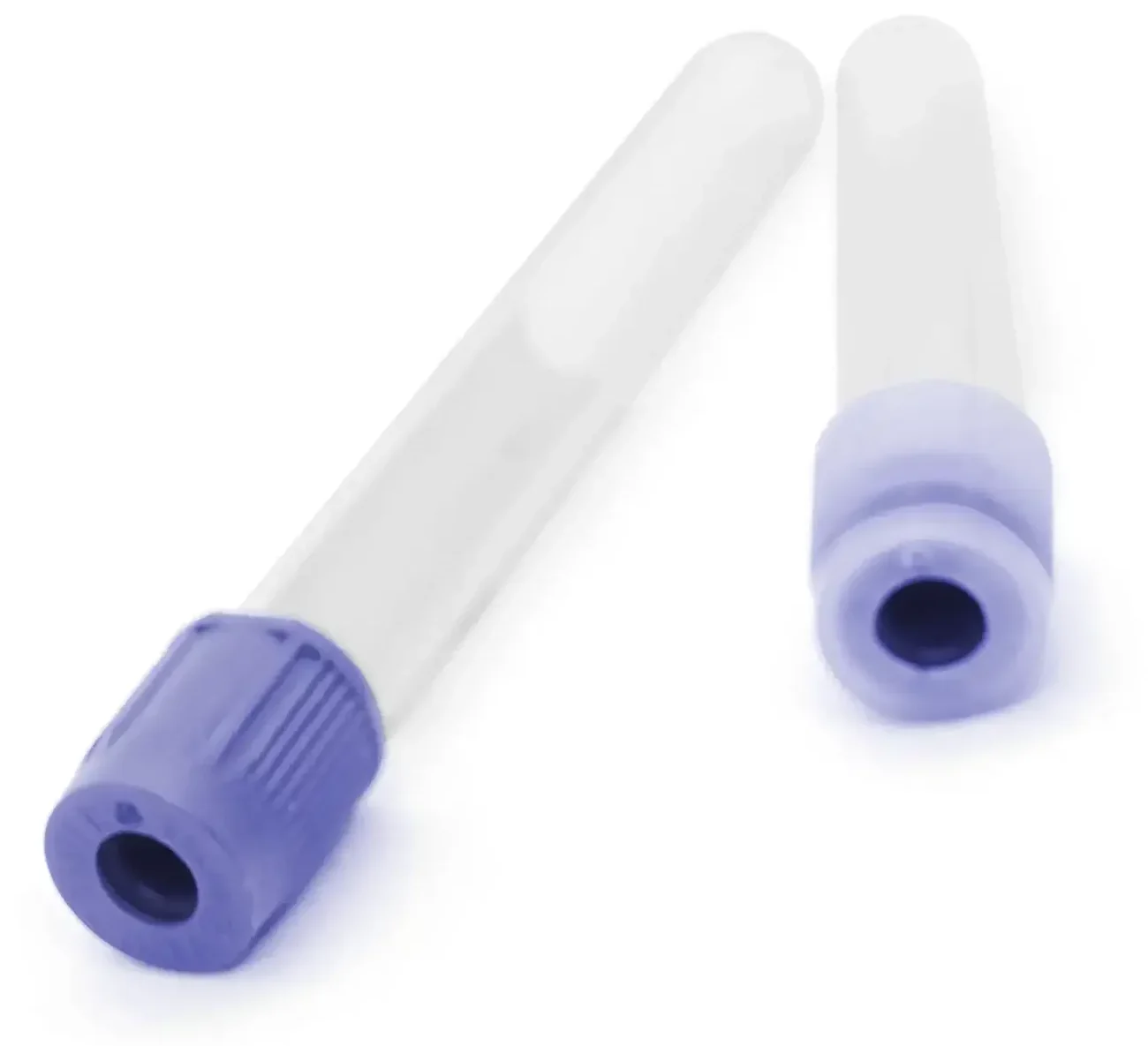Clinicians
Early Detection of Alzheimer’s Disease Pathology
Evidence-based detection powered by the ALZpath pTau217 antibody.
In less than a decade, phosphorylated tau at threonine 217 (pTau217) in plasma has gone from scientific discovery to the most widely used blood biomarker for Alzheimer’s disease pathology. Studies show it closely mirrors amyloid and tau changes detected by CSF and PET [1,2], and delivers diagnostic accuracy on par with these gold-standard tests, with AUC values consistently in the 0.92–0.97 range across independent cohorts [3–8].
The ALZpath pTau217 antibody makes this breakthrough reliable and widely available. Purpose-built for blood-based assays, it enables highly sensitive and specific testing from a simple blood draw—bringing a scalable, less invasive alternative to PET imaging and lumbar puncture into routine care. In doing so, it advances ALZpath’s mission to deliver early and accurate detection of Alzheimer’s disease through a simple blood test—helping accelerate diagnosis today and paving the way for future prevention and treatment.

Plasma pTau217 | Amyloid PET | CSF | |
|---|---|---|---|
What it measures | pTau217 (± ratios†) reflect AD pathology | In-vivo amyloid/tau aggregates | AB42/40, pTau, tTau concentrations |
Accuracy | AUC vs Amyloid PET ~0.92–0.97 across independent cohorts 1 | AUC vs. Autopsy ADNC: ~0.85-0.94 | CSF Aβ42/40 ratio AUC to Amyloid PET: ~0.86–0.96 |
Invasiveness | Low (routine blood draw) | Moderate (IV tracer + scan time) | Moderate (lumbar puncture) |
Scalability & access | High (phlebotomy + centralized labs; suitable for triage/confirmation) | Limited by scanner availability, cost, geography | Limited by LP capacity & patient acceptance |
† = npTau217/pTau217; pTau217/Aβ42
ADNC: Alzheimer’s Disease Neuropathologic Change
Clinical Relevance
Incorporating pTau217 testing into evaluation pathways can substantially reduce diagnostic uncertainty for patients presenting with cognitive decline. Reliably distinguishing the presence or absence of Alzheimer’s disease pathology supports earlier, evidence-based decisions about treatment, clinical trial participation, and long-term care planning [9]. The assay’s accessibility further addresses barriers of cost, availability, and patient acceptance that often limit the use of PET or CSF testing [10,11].
How to Order
ALZpathDx, the first laboratory developed test (LDT) using the ALZpath antibody became available in January 2024 through Neurocode, a CLIA-certified lab. Clinicians can order testing directly by simply completing a requisition form from Neurocode via the link below. Testing is available across the United States. For ordering outside the US please contact us for additional details.
Note: The ALZpathDx LDT at Neurocode is not FDA approved and should be interpreted within the context of comprehensive clinical evaluation. ALZpath’s pTau217 antibody is a Research Use Only (RUO) reagent. Assays using the ALZpath pTau217 antibody are currently in development and will be submitted for FDA clearance as In Vitro Diagnostics (IVDs).
Expansion to other labs is expected as the ALZpath antibody is developed into diagnostic tests on additional testing platforms. Contact us to find out more.
Clinicians FAQs
What is pTau217?
pTau217 is a specific form of the tau protein that has been modified by the addition of phosphate groups (phosphorylation). It is closely linked to Alzheimer’s disease pathology and is considered one of the most reliable blood biomarkers for detecting the disease. Elevated levels of pTau217 in the blood strongly correlate with the presence of amyloid plaques and tau tangles in the brain, which are hallmarks of Alzheimer’s disease.
What is the ALZpathDx test?
The ALZpathDx test is available from Neurocode and is a blood-based diagnostic tool designed to measure levels of pTau217. The test helps clinicians identify and monitor Alzheimer’s disease more accurately and at earlier stages than traditional methods. This enables earlier intervention and better tracking of disease progression and response to treatments.
Who is this test appropriate for?
The ALZPathDx test at Neurocode is recommended for individuals experiencing cognitive decline over the age of 55. Learn more at Neurocode.
How do I order the test?
To order the blood collection kit, please visit the Neurocode website.
How do ALZpath antibody-powered assays compare to CSF and PET scans?
Recent research shows that pTau217 blood tests perform comparably to pTau217 measured in cerebrospinal fluid for the diagnosis of Alzheimer’s disease [1-2]. These assays also demonstrate exceptional accuracy in detecting amyloid and tau positivity, distinguishing the presence of tau tangles in amyloid-positive individuals, and tracks closely with PET imaging results in diverse cohorts [3].
For more information visit our publications page.
How are ALZpath antibody-powered assays used in Alzheimer’s disease diagnosis?
ALZpath antibody-powered assays may be used to aid in the diagnosis of Alzheimer’s disease in individuals who are experiencing cognitive changes. Elevated levels of pTau217 in the blood may indicate the presence of Alzheimer’s disease pathology. While a definitive diagnosis of Alzheimer’s disease requires a combination of clinical assessments including cognitive testing, measuring pTau217 levels in the blood is emerging as a key tool for diagnosing Alzheimer’s disease-specific pathology in many patients. These assays may also aid in differentiating Alzheimer’s disease from other types of dementia or cognitive disorders [12].
Can ALZpath antibody-powered assays indicate the stage or severity of AD?
Currently, these assays are used to identify underlying Alzheimer’s disease pathology and do not offer a prognosis on disease severity or progression, although research in this area is active.
Do ALZpath antibody-powered assays require a special sample type?
A standard blood draw (EDTA plasma) can be performed in virtually any clinical setting, eliminating the need for specialized facilities or procedures. For more information on collection details contact Neurocode.
Does kidney disease interfere with pTau217 results?
Some studies have suggested that pTau217 can increase in patients with significant renal impairment (eGFR <45). (13)
For more information, visit our publications.
What codes will I need to use and what reimbursement will I receive?
Currently, there is a PLA code, but no CPT code. This test is patient-pay only. Contact billing at customercare@neurocode.com for more details.
View References
- Barthélemy NR, et al. Blood plasma phosphorylated-tau isoforms track CNS Alzheimer’s disease pathophysiology. J Exp Med. 2020;217(11). doi:10.1084/jem.20200861
- Janelidze S, Berron D, Smith R, et al. Associations of Plasma Phospho-Tau217 Levels With Tau Positron Emission Tomography in Early Alzheimer Disease. JAMA Neurol. 2021;78(2):149-156. doi:10.1001/jamaneurol.2020.4201
- Ashton NJ, Brum WS, Di Molfetta G, et al. Diagnostic Accuracy of a Plasma Phosphorylated Tau 217 Immunoassay for Alzheimer Disease Pathology. JAMA Neurol. 2024;81(3):255-263. doi:10.1001/jamaneurol.2023.5319
- Pandey N, Yang Z, Cieza B, et al. Plasma phospho-tau217 as a predictive biomarker for Alzheimer’s disease in a large South American cohort. Alzheimer’s Research & Therapy. 2025;17:1. doi:10.1186/s13195-024-01655-w
- Zhong X, Wang Q, Yang M, Lin G, Yao K, Wu Z, et al. Plasma p-tau217 and p-tau217/Aβ1-42 are effective biomarkers for identifying CSF- and PET imaging-diagnosed Alzheimer’s disease: Insights for research and clinical practice. Alzheimer’s & Dementia. 2025;21(2):e14536. doi:10.1002/alz.14536
- Palmqvist S, Janelidze S, Quiroz YT, et al. Discriminative Accuracy of Plasma Phospho-tau217 for Alzheimer Disease vs Other Neurodegenerative Disorders. JAMA. 2020;324(8):772-781. doi:10.1001/jama.2020.12134
- Ennis GE, Cambronero FE, Hunt JFV, et al. The performance of plasma p-tau217 in Black middle-aged and older adults. Alzheimer’s & Dementia. 2025;21(9):e70288. DOI: 10.1002/alz.70288
- Wang Q, Zhong X, Yang M, et al. Assessing diagnostic performance of plasma biomarkers…: P-tau217 emerges as the optimal marker in Chinese cohorts. Alzheimer’s & Dementia. 2025;21(7):e70158. DOI: 10.3389/fnagi.2025.1554805
- Angioni D, Delrieu J, Hansson O, et al.; EU/US CTAD Task Force. Blood Biomarkers from Research Use to Clinical Practice: What Must Be Done? J Prev Alzheimers Dis. 2022;9(4):569–579. doi:10.14283/jpad.2022.85.
- Chang H-I, Ma M-C, Huang K-L, et al. Optimizing timing and cost-effective use of plasma biomarkers in Alzheimer’s disease. Alzheimer’s Research & Therapy. 2025;17:194. doi:10.1186/s13195-025-01851-2.
- Mattke S, Chen J, Hanson M, et al. Estimation of the value-based price of a blood test for Alzheimer’s disease pathology in primary and specialty care in the U.S. J Prev Alzheimers Dis. 2025;12(7):100219. doi:10.1016/j.tjpad.2025.100219.
- Sewell KR, Oberlin LE, Karikari TK, et al. Blood biomarkers differentiate AD-related versus non-AD-related cognitive deficits. Alzheimer’s & Dementia. 2025;21(3):e14619. doi:10.1002/alz.14619. PMCID: PMC11923558.
- Arslan B, Brum WS, Pola I, Therriault J, Rahmouni N, Stevenson J, et al. The impact of kidney function on Alzheimer’s disease blood biomarkers: implications for predicting amyloid-β positivity. Alzheimer’s Research & Therapy. 2025;17:48. doi:10.1186/s13195-025-01692-z

Want to Know More?
Connect With Us
Contact our team to learn more about the availability of clinical tests that are powered by the ALZpath pTau217 antibody.
